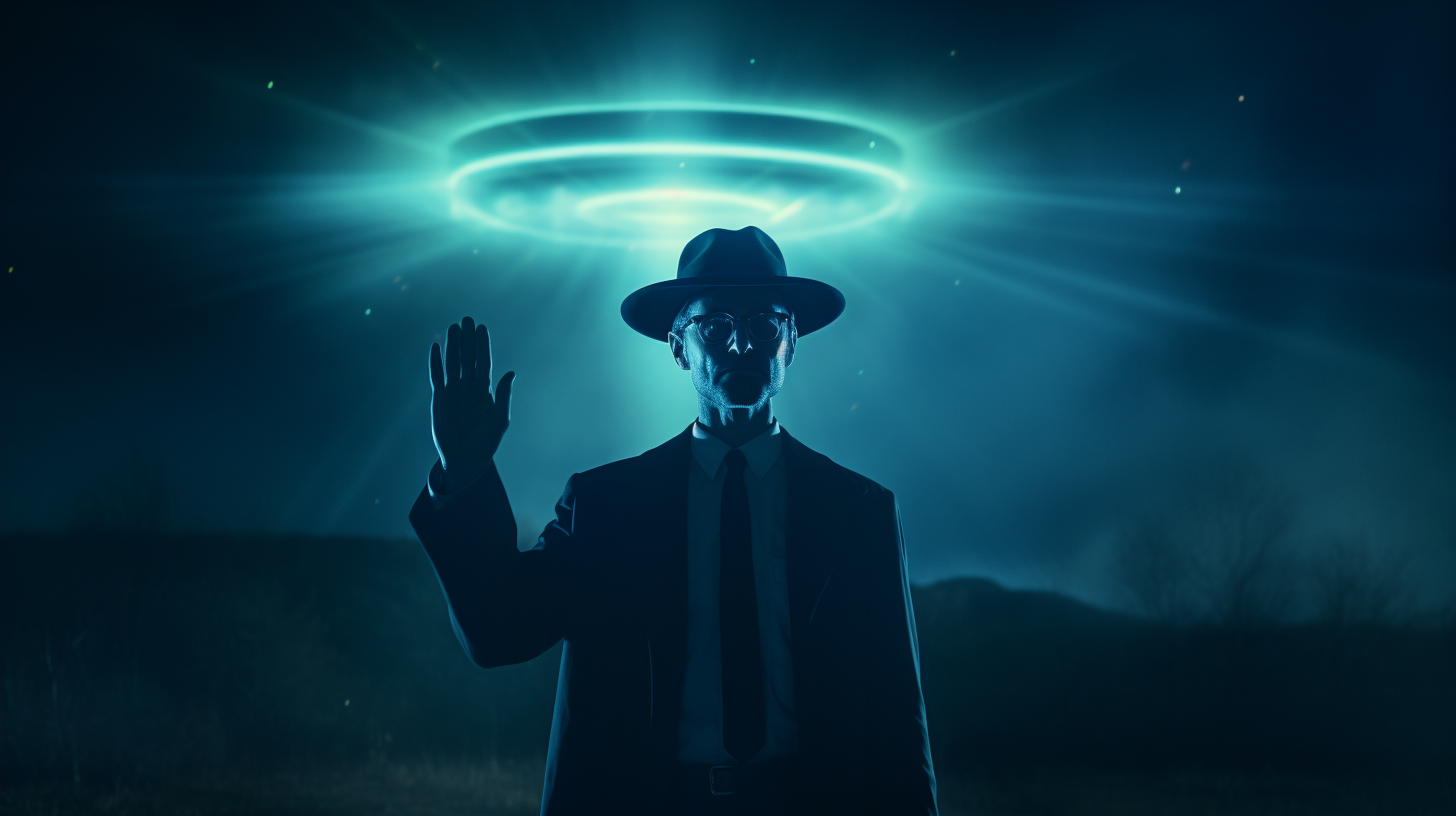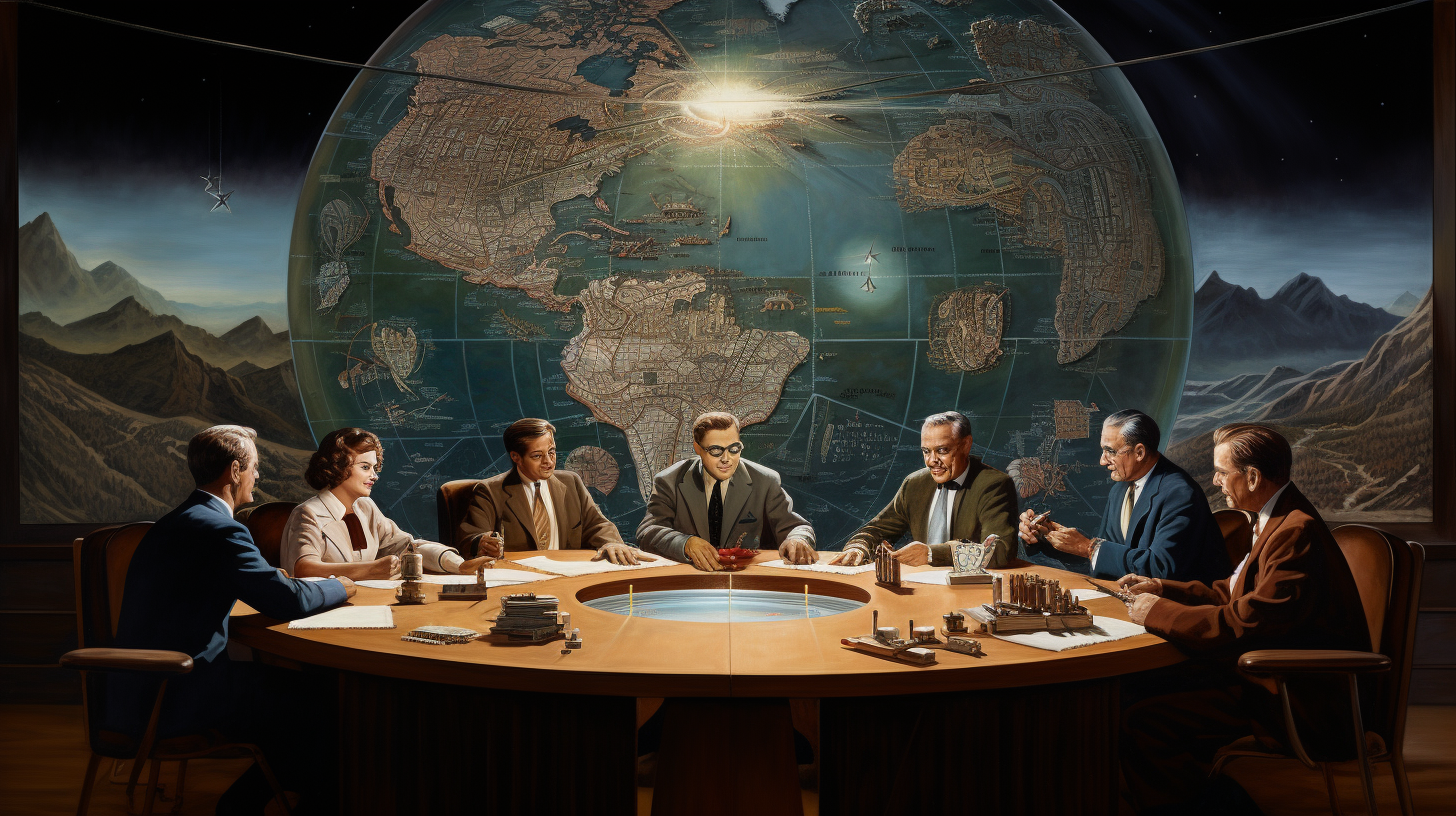Project BLUE BOOK: A Comprehensive Guide
Introduction
The enigma of Unidentified Flying Objects (UFOs) has long captivated the public’s imagination. But did you know that the U.S. government once had an official program to investigate these phenomena?
Welcome to the world of Project BLUE BOOK—a top-secret initiative that aimed to get to the bottom of the UFO mystery. This guide aims to provide a comprehensive look into the project, its findings, controversies, and its enduring legacy.
Key Takeaways:
- Initiated in 1952 by the U.S. Air Force, Project Blue Book aimed to investigate and debunk UFO reports to prevent potential panic and address national security concerns.
- Headquartered at Wright-Patterson Air Force Base, Ohio with Captain Edward J. Ruppelt as its first director.
- Two main objectives:
- Assess if UFOs were a threat to U.S. security.
- Discover if UFOs held any scientific or technological advancements beneficial for research.
- Core mission was to document UFO sighting reports.
- Officials often believed sightings were misidentifications, yet didn’t dismiss the potential of extraterrestrial phenomena.
- The public’s belief in extraterrestrial life fueled tens of thousands of UFO reports to Project Blue Book.
- Project concluded on December 17, 1969, with 12,618 sightings recorded, 701 of which remain “Unidentified.”
- Despite its significance, the project wasn’t a large institution and struggled with the high volume of reports.
The Origins of Project BLUE BOOK
Project BLUE BOOK was an Air Force program that investigated UFO sightings across the United States. Running from 1952 to 1969, the project aimed to determine if UFOs posed a threat to national security and to scientifically analyze the data collected.
Beyond its official objectives, the project also had a significant cultural impact, shaping public perception and discourse around the UFO phenomenon.
What is Project BLUE BOOK?
Project BLUE BOOK was a series of studies on UFOs conducted by the United States Air Force. Its primary objective was to determine if UFOs were a threat to national security and to scientifically analyze UFO-related data.
Project Blue Book was a systematic study of unidentified flying objects (UFOs) conducted by the United States Air Force from 1952 until its termination in 1969.
The project collected 12,618 UFO reports and concluded that most were misidentifications of natural phenomena or conventional aircraft.
However, 701 reports remained unexplained. The project aimed to determine if UFOs were a threat to national security and to scientifically analyze UFO-related data

Historical Context
The Cold War era was a time of high tension, and the U.S. government was keen on understanding any potential threats, terrestrial or otherwise.
Project BLUE BOOK was born out of this sense of urgency. The project not only aimed to investigate UFO sightings but also to quell public hysteria that could be exploited by foreign powers.
The Evolution: From SIGN to GRUDGE to BLUE BOOK
Before BLUE BOOK, there were two other projects aimed at investigating UFOs: Project SIGN and Project GRUDGE.
While SIGN was inconclusive, GRUDGE was criticized for its dismissive stance on UFO sightings. BLUE BOOK aimed to take a more scientific approach.
It was under BLUE BOOK that the Air Force started taking a more systematic approach to data collection and analysis.
The Role of the Air Force
The United States Air Force was the primary agency responsible for the investigation of UFO sightings under Project BLUE BOOK. They collected data, conducted interviews, and analyzed findings to determine the nature and threat level of each sighting.
Key Personnel
- Captain Edward J. Ruppelt: Often considered the first head of Project BLUE BOOK, Ruppelt coined the term “UFO.” His leadership is credited with bringing a more rigorous methodology to the project.
- Dr. J. Allen Hynek: An astronomer and scientific consultant for the project, Hynek later became a prominent UFO researcher. His involvement lent the project an air of scientific credibility, although he later criticized its shortcomings.

Key Findings
- Natural Phenomena: Many sightings were explained as natural occurrences like weather balloons, flares, and atmospheric conditions. However, this explanation was not sufficient to account for all sightings.
- Conventional Aircraft: Some UFOs turned out to be secret military aircraft. These cases often led to more questions than answers, fueling public speculation.
- Unexplained Cases: A small percentage of cases remained unexplained, fueling public speculation. These cases are often cited by UFO enthusiasts as evidence of extraterrestrial life.
High-Profile Cases
- The Washington Merry-Go-Round: In 1952, UFOs were reported over Washington, D.C., leading to public panic and official investigations. This incident remains one of the most well-documented and controversial cases in UFO history.
- The Lonnie Zamora Incident: A police officer reported seeing an oval-shaped object and strange markings on the ground in Socorro, New Mexico. This case gained national attention and remains unexplained to this day.
Controversies and Criticisms
- Lack of Scientific Rigor: Critics argue that the project lacked a scientific methodology. This criticism gained traction in the later years of the project, leading to its eventual termination.
- Government Cover-Up: Conspiracy theories suggest that the project was a smokescreen to hide the truth about extraterrestrial life. These theories persist today, despite the declassification of many of the project’s records.
Declassified Air Force Documents
The records of Project BLUE BOOK have been declassified and are available for public viewing. These documents provide a detailed account of the investigations, findings, and official stance of the U.S. government on UFOs.
For example, the records include case files of sightings, photographs, and even radar data. These documents serve as a primary source for researchers and enthusiasts alike, offering a window into how the government approached the UFO phenomenon.
Example: Freedom of Information Act
The UFO reports collected by Project Blue Book were archived and are available under the Freedom of Information Act, although personal information has been redacted.

Uncovering the Truth behind UFO Sightings
Project BLUE BOOK aimed to provide scientific explanations for UFO sightings, but its closure left many questions unanswered.
The project’s records, however, remain a valuable resource for those seeking to understand the UFO phenomenon.
For instance, the project’s case files often include detailed interviews with witnesses, sketches, and sometimes even physical evidence. These records are frequently cited in modern UFO research and have helped to shape the field.
The Condon Report
The project was terminated in 1969 following the Condon Report, which concluded that the study of UFOs was unlikely to yield major scientific discoveries.
Examining Notable UFO Encounters
The project investigated numerous UFO sightings, some of which gained significant media attention.
These high-profile cases often involved multiple witnesses and had lasting impacts on public perception of UFOs. Some examples:
The Lonnie Zamora Incident
A police officer reported seeing an oval-shaped object and strange markings on the ground. This case gained national attention and remains unexplained to this day, serving as a focal point in discussions about the credibility of UFO sightings.
1952 Washington D.C. UFO Incident
In July 1952, radar detections coincident with visual sightings were observed near the National Airport in Washington, D.C., leading to significant media attention.
Controversial Cases and Conspiracy Theories
The project’s findings have been the subject of various conspiracy theories. These theories often question the validity of the official reports and suggest that the U.S. government is hiding the truth about extraterrestrial life.
For example, the Roswell Incident, although not directly part of Project BLUE BOOK, has been cited by conspiracy theorists as evidence that the government is involved in a cover-up. Such theories continue to fuel skepticism and debate around the project’s findings.
Robertson Panel
The Robertson Panel concluded that most UFO reports had prosaic explanations and recommended a debunking campaign to lessen public interest, which many believe was an attempt to control public opinion.

Project BLUE BOOK Legacy and Influence
Project BLUE BOOK was officially terminated in 1969 after a report concluded that it was unlikely to yield any useful information. However, the project’s records have been declassified and serve as a treasure trove for UFO researchers.
The project may have ended, but its impact on UFO research and public perception continues to be felt today. For instance, the project’s methodology and findings are often cited in academic papers and have influenced the way modern UFO research is conducted.
Impact on Public Perception of UFOs
The project had a significant impact on how the public perceives UFOs. While it may have officially closed, its findings and records continue to fuel debates and discussions on the existence of extraterrestrial life.
The project’s high-profile cases, in particular, have become part of popular culture, inspiring movies, documentaries, and even influencing political discourse on the subject.
The project’s termination and the subsequent release of the Condon Report led to public mistrust and fueled conspiracy theories.
Contributions to Scientific Research
Although criticized for its lack of scientific rigor, Project BLUE BOOK did contribute to the field of ufology.
The data collected has been used in various scientific studies and continues to be analyzed by researchers.
For example, Dr. J. Allen Hynek, who was a scientific consultant for the project, went on to establish the Center for the Study of Extraterrestrial Intelligence (CSETI), furthering the scientific study of UFOs.//
Unveiling the Future of UFO Investigations
While Project BLUE BOOK may have been terminated, the quest to understand the UFO phenomenon continues.
New initiatives and organizations have taken up the mantle, aiming to provide more conclusive answers.
For instance, the Advanced Aerospace Threat Identification Program (AATIP) was a secret investigatory effort funded by the U.S. government to study unidentified flying objects.
New Initiatives and Organizations
In the years following the closure of Project BLUE BOOK, various organizations and initiatives have been established to continue the study of UFOs.
These range from government programs like the aforementioned AATIP to private research organizations like the Mutual UFO Network (MUFON), which collects and analyzes data on UFO sightings worldwide.
Advancements in UFO Technology Study
Technological advancements have allowed for more sophisticated methods of studying UFOs. These new techniques promise to provide more accurate and conclusive findings in future investigations.
For example, advancements in radar and satellite technology have made it easier to track unidentified objects in the sky, while machine learning algorithms can now sift through massive amounts of data to identify patterns or anomalies.
Conclusion
While Project BLUE BOOK may have closed its files, the questions it sought to answer remain as relevant as ever. Whether you’re a skeptic or a believer, the project’s legacy offers a compelling glimpse into the government’s handling of one of the most enduring mysteries of our time.
As we continue to search for answers, Project BLUE BOOK serves as a fascinating chapter in the ongoing story of humanity’s quest to understand the unknown.
Further Reading
For those who wish to delve deeper, the National Archives houses the original records, providing a rich resource for anyone keen on UFO history.
Whether you’re a researcher, a history buff, or simply curious, these records offer a unique opportunity to explore one of the most intriguing subjects of the 20th century.






